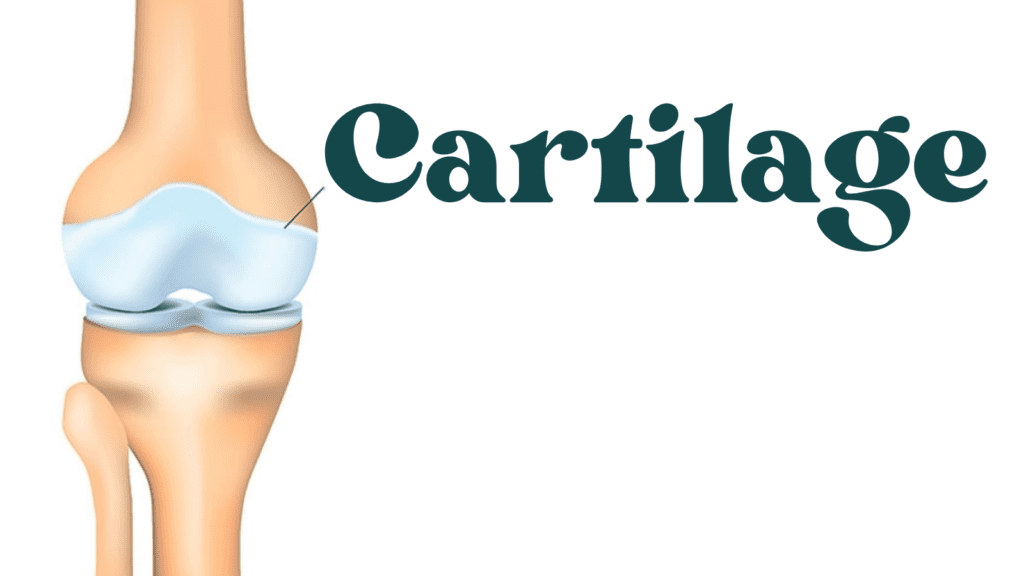Caring for Your Cartilage: The Unsung Hero of Your Mobility

In the intricate tapestry of the human body, there are countless elements working harmoniously to keep us upright, agile, and pain-free. While bones and muscles often take the spotlight, there exists an unsung hero, quietly supporting our every move: cartilage. In this blog post, we will delve into the fascinating world of cartilage, exploring its structure, functions, and the importance of its care in maintaining our overall well-being.
The Basics of Cartilage
Cartilage is a resilient and smooth elastic tissue found in various parts of the body, including joints, the ribcage, the ear, the nose, and the throat. It consists of specialized cells called chondrocytes, which are dispersed in a gel-like matrix rich in collagen fibers. Unlike bones, cartilage does not contain blood vessels or nerves, which makes its healing process considerably slower than other tissues in the body.
The Different Types of Cartilage
1. Hyaline Cartilage: Hyaline cartilage is the most prevalent type of cartilage in the body. It is characterized by its smooth, glassy appearance and is found in several important locations:
- Articular Cartilage: This type of hyaline cartilage covers the ends of bones in synovial joints, where it provides a smooth, low-friction surface for joint movement. Articular cartilage plays a critical role in reducing wear and tear during activities like walking, running, and bending.
- Costal Cartilage: Hyaline cartilage is present in the ribcage, specifically connecting the ribs to the sternum (breastbone). These costal cartilages add flexibility to the ribcage, allowing it to expand during breathing.
- Respiratory Cartilage: In the respiratory system, hyaline cartilage forms the supportive framework of the larynx (voice box), trachea (windpipe), and bronchi (airways). It maintains the open passages for air to flow during breathing and speaking.
2. Fibrocartilage: Fibrocartilage is a tough and durable type of cartilage due to its unique composition, which includes both collagen fibers and cartilage cells (chondrocytes). This type of cartilage is found in locations requiring both strength and shock absorption:
- Intervertebral Discs: Fibrocartilage is a major component of the intervertebral discs in the spine. It acts as a cushion between vertebrae, absorbing shock and preventing the bones from rubbing against each other. These discs also provide flexibility and allow for spinal movement.
- Menisci: In the knee joints, fibrocartilage is present in the menisci, which are C-shaped wedges located between the ends of the femur (thigh bone) and tibia (shin bone). The menisci improve joint stability and absorb the forces generated during activities like walking, running, and pivoting.
3. Elastic Cartilage: Elastic cartilage is distinguished by its high elasticity and flexibility, which is attributed to an abundance of elastic fibers within the extracellular matrix. It is primarily found in the external ear and certain parts of the larynx (voice box):
- External Ear: Elastic cartilage forms the structural framework of the external ear (pinna). Its elasticity allows the ear to maintain its shape while being flexible enough to withstand deformation from external forces.
- Epiglottis: In the larynx, the epiglottis is composed of elastic cartilage. It is responsible for preventing food and liquids from entering the airway during swallowing by covering the entrance to the trachea.
Taking Care of Cartilage
Taking care of cartilage is essential for maintaining joint health and overall mobility. While cartilage doesn’t regenerate as quickly as some other tissues in the body, there are steps you can take to protect and preserve it:
- Stay Active: Regular, low-impact exercise is crucial for keeping your joints healthy. Activities like walking, swimming, and cycling help strengthen the muscles around your joints, providing them with better support and reducing stress on cartilage.
- Maintain a Healthy Weight: Excess body weight places added stress on weight-bearing joints like the knees and hips. Maintaining a healthy weight through a balanced diet and exercise can significantly reduce the risk of joint problems.
- Balanced Diet: Certain nutrients are essential for cartilage health. These include vitamin C, vitamin D, and omega-3 fatty acids. Incorporate a diet rich in fruits, vegetables, fish, and dairy products to ensure you’re getting these nutrients.
- Stay Hydrated: Cartilage contains a significant amount of water, which helps maintain its elasticity and shock-absorbing properties. Staying well-hydrated is essential for cartilage health.
- Joint-Friendly Supplements: Some supplements, such as glucosamine and chondroitin, are believed to support joint health. Consult with a healthcare professional before adding any supplements to your regimen.
- Proper Posture and Body Mechanics: Use proper body mechanics and ergonomics when performing daily tasks or lifting heavy objects to minimize joint stress. Maintaining good posture also reduces unnecessary strain on your joints.
- Joint Protection: If you engage in activities that place stress on your joints, consider using joint support devices such as knee braces or shoe insoles designed for shock absorption.
- Avoid Overuse: Repetitive motions or excessive use of specific joints can lead to cartilage wear and tear. Rotate activities to give overused joints time to recover.
- Warm-Up and Stretch: Before exercising or engaging in physical activities, warm up your muscles and stretch to prepare your joints for movement. This reduces the risk of injury.
- Quit Smoking: Smoking has been linked to increased cartilage damage. Quitting smoking can benefit your overall joint health.
- Regular Check-ups: Routine medical check-ups can help detect and address joint issues or cartilage damage early. If you experience joint pain or stiffness, consult a healthcare professional promptly.
- Manage Stress: Chronic stress can contribute to inflammation in the body, potentially affecting joint health. Engage in stress-reduction techniques like meditation, yoga, or deep breathing exercises.
- Medication Management: If you have an existing medical condition affecting your joints, follow your healthcare provider’s recommendations for medication and treatment.
Conclusion
Taking care of your cartilage is an essential part of maintaining overall joint health and mobility. By incorporating these practices into your daily life, you can support the resilience and functionality of this vital tissue. Remember that cartilage is not only responsible for pain-free movement but also plays a significant role in your overall well-being.
Regular exercise, a balanced diet, maintaining a healthy weight, and practicing good posture are all key components of cartilage care. Additionally, protecting your joints during physical activities, staying hydrated, and considering joint-friendly supplements can further promote cartilage health.
Lastly, don’t underestimate the importance of early detection and prompt medical attention if you experience joint pain or stiffness. Regular check-ups and consultations with healthcare professionals can help address any issues before they become more severe.
In caring for your cartilage, you are investing in a lifetime of pain-free movement and an active, fulfilling life. So, make cartilage care a priority, and your body will thank you for it.
Disclaimer
The information provided in this blog post is for educational purposes only and should not be considered as medical advice. It is important to consult with a healthcare professional for personalized guidance and recommendations regarding your specific health and joint concerns. Additionally, any dietary supplements or lifestyle changes should be discussed with a healthcare provider to ensure they are safe and appropriate for your individual needs.
Stay updated—subscribe now for informed empowerment!

